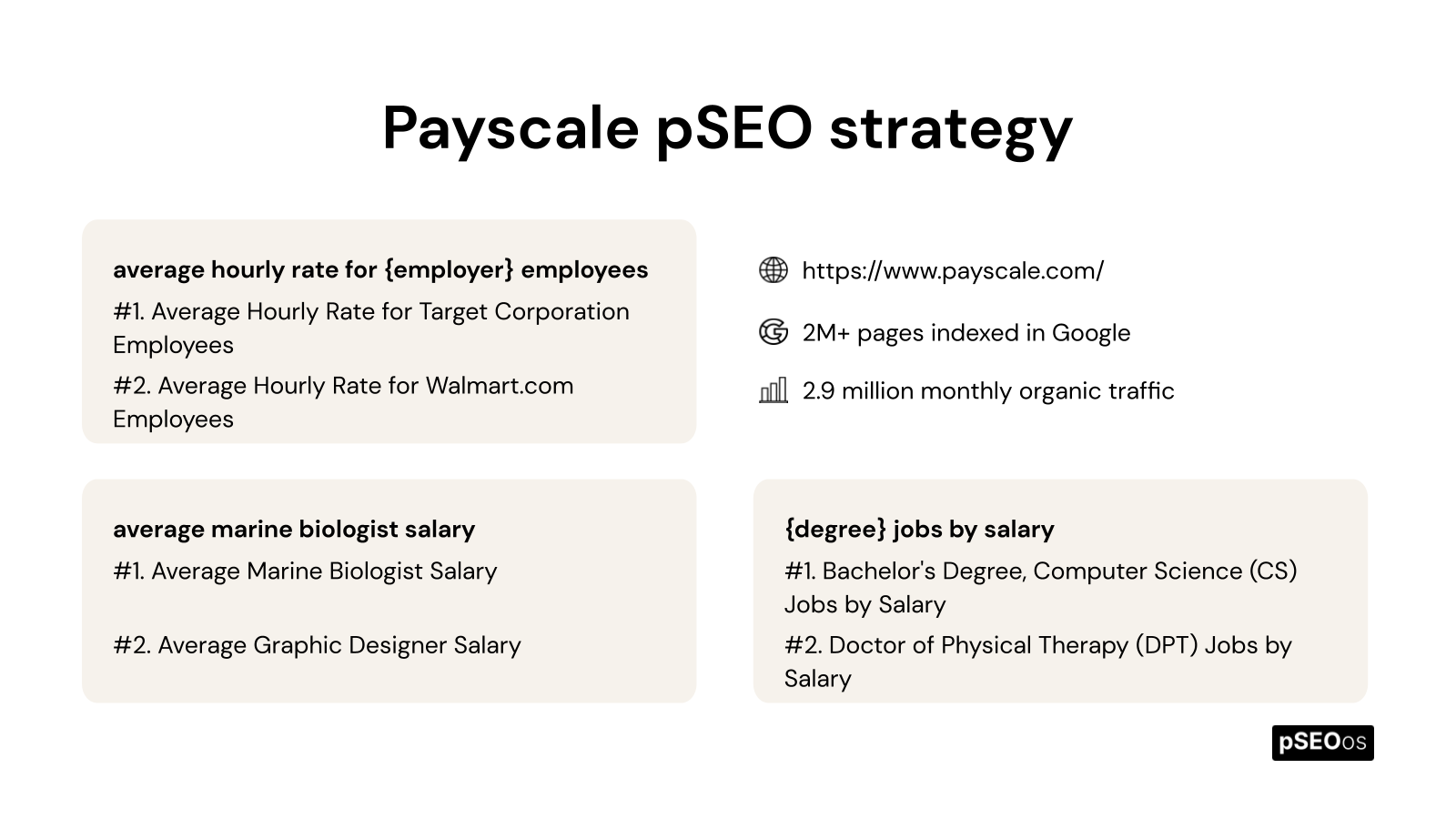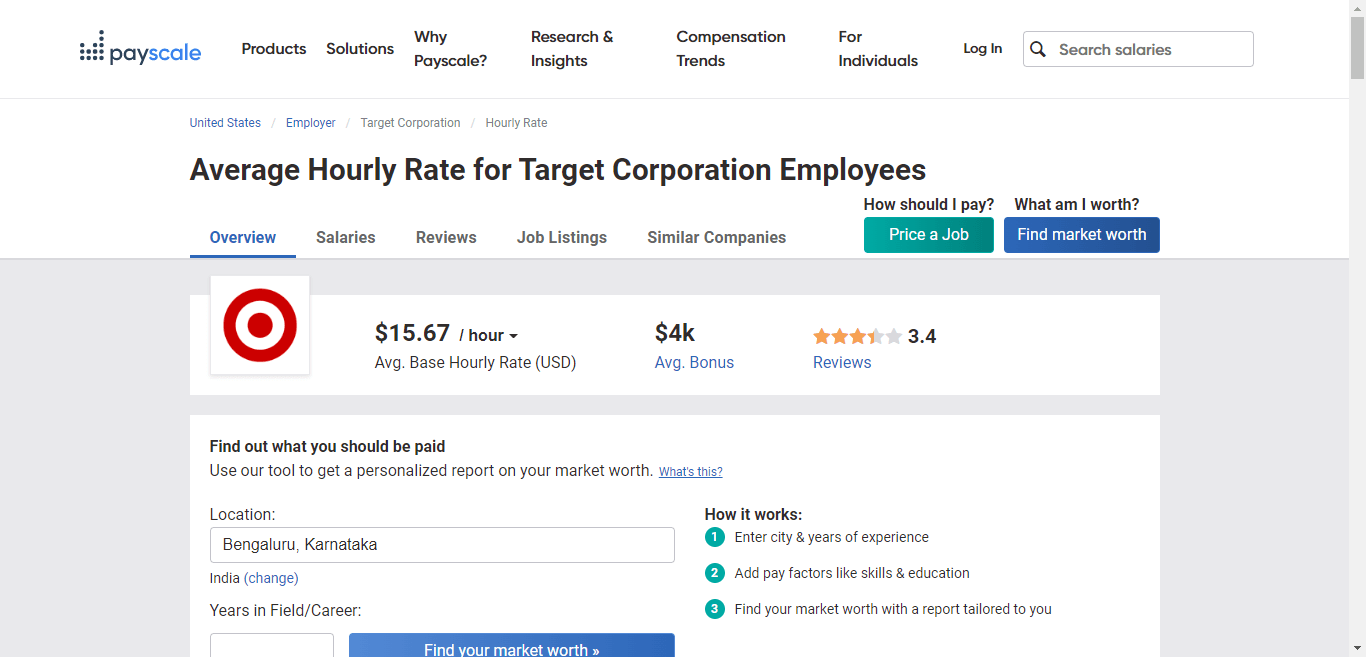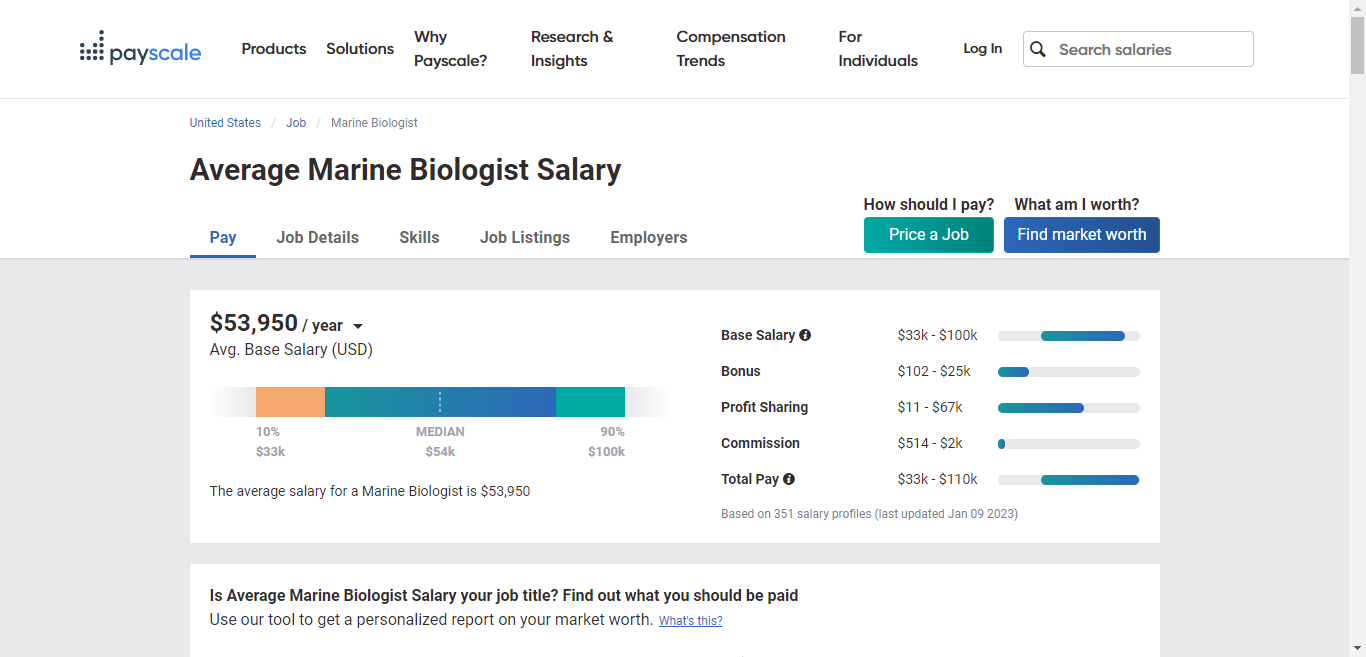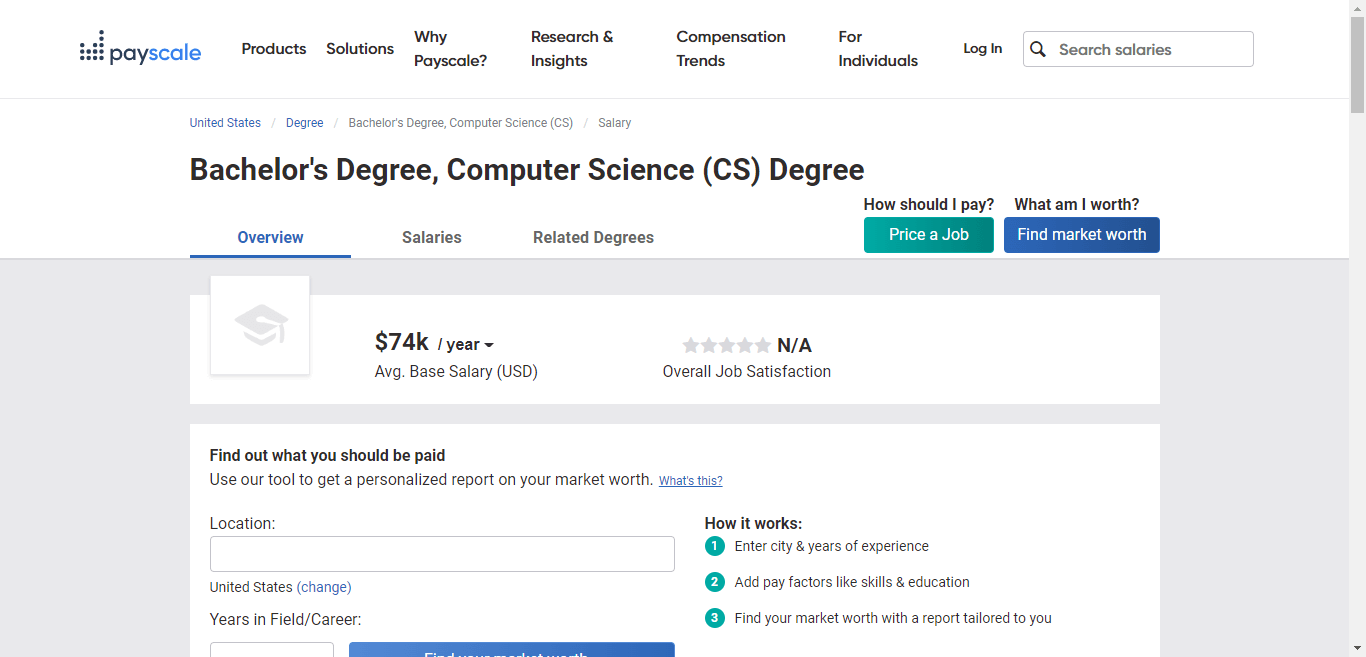Payscale: Programmatic SEO Case Study
Psssst. Just so you know - this entire section was built using programmatic SEO and this Google Sheet.
PayScale website feels much like G2 where they beautifully show a lot of data in a meaningful format by using programmatic SEO. The website receiving more than 2.9 million monthly traffic and there's a lot to learn from the site.
Payscale Overview
Payscale is a compensation software and data company that empowers people and employers with the strategic power of compensation by delivering data, services, and software to get pay right. The company's advanced compensation management platform provides comprehensive solutions, services, and products that set the standard for competitive compensation practices. The platform also allows businesses to utilize multiple compensation data sources and perform robust compensation analytics.

Payscale has implemented the techniques of programmatic SEO in the following area(s).
1. Employer hourly rate
In this area, Payscale targets average hourly rate for {employer} employees which is informational in nature.
The programmatic pages generated under "employer hourly rate" would be considered landing page type.
Let's take a look at some example pages in this area, and how much organic traffic they generate every month:
| Example page | Monthly organic traffic |
|---|---|
| Average Hourly Rate for Target Corporation Employees | 20.3k |
| Average Hourly Rate for Walmart.com Employees | 16.6k |
| Average Hourly Rate for McDonald's Corporation Employees | 16.5k |

Employer hourly rate Data Points
A few data points that Payscale uses on these programmatically generated pages are:
- A descriptive title of the page
- Per hour working rate along with probable average bonus
- Different jobs available in the company
- Section showing FAQs and reviews for the selected company
- A list of companies similar to the current company
2. Average salary
In this area, Payscale targets average marine biologist salary which is informational in nature.
The programmatic pages generated under "average salary" would be considered landing page type.
Now we can check out some example pages in this area, and how much organic traffic they get every month:
| Example page | Monthly organic traffic |
|---|---|
| Average Marine Biologist Salary | 9.1k |
| Average Graphic Designer Salary | 8.7k |
| Average Software Engineer Salary | 7.7k |

Average salary Data Points
A few data points that Payscale uses on these programmatically generated pages are:
- A title for the average salary for the profession
- A probable per year base salary data
- Bonus, commission, profit sharing, etc. data about the position
- Job details and skills required to get the job
- FAQs, job listings, and popular employers
3. Degree jobs by salary
In this area, Payscale targets {degree} jobs by salary which is informational in nature.
The programmatic pages generated under "degree jobs by salary" would be considered landing page type.
Finally, lets dive into the example pages in this area, to see how much traffic they get for this section:
| Example page | Monthly organic traffic |
|---|---|
| Bachelor's Degree, Computer Science (CS) Jobs by Salary | 3.6k |
| Doctor of Physical Therapy (DPT) Jobs by Salary | 1.5k |
| Bachelor of Science (BS / BSc), Kinesiology Jobs by Salary | 950 |

Degree jobs by salary Data Points
A few data points that Payscale uses on these programmatically generated pages are:
- A descriptive title of the page
- Average base salary data for the category
- Different related categories and their salaries
- Some featured blog posts and other content
- Related degress and popular companies in the category
And that is how Payscale uses programmatic pages to generate 2.9 million organic traffic every single month.